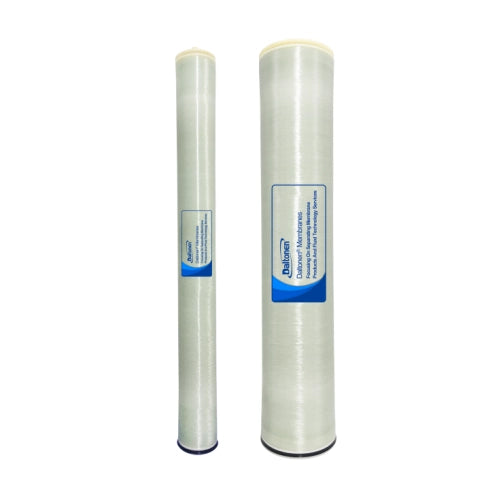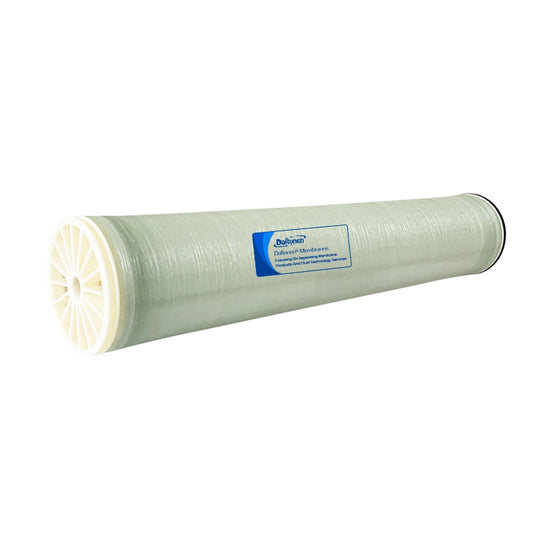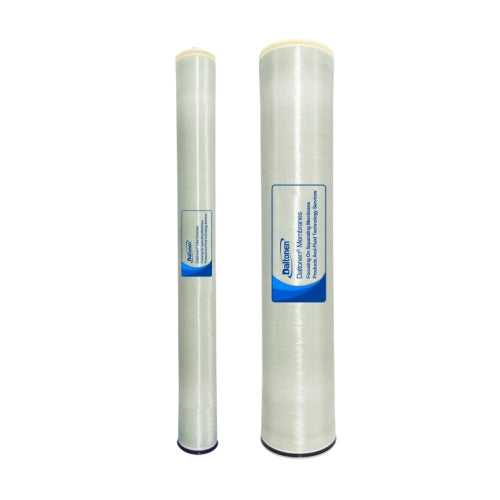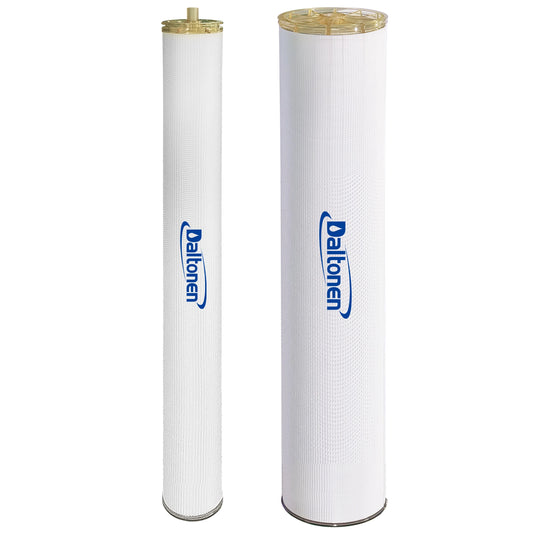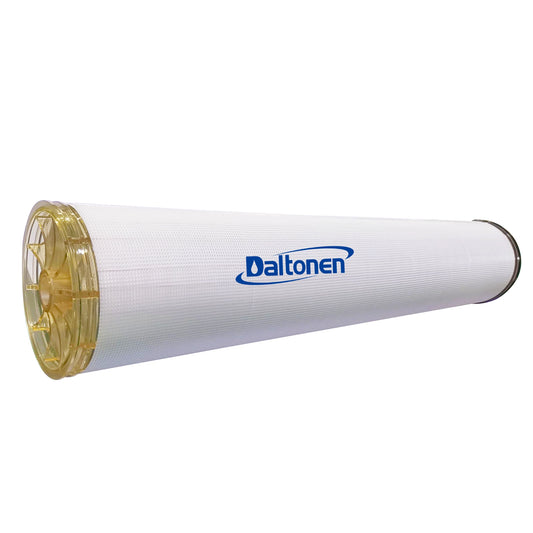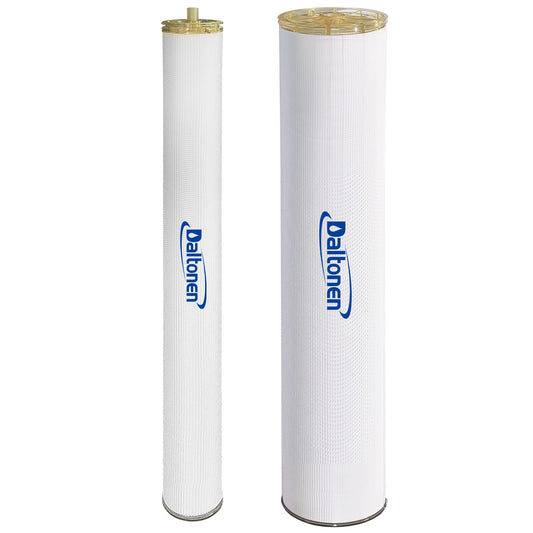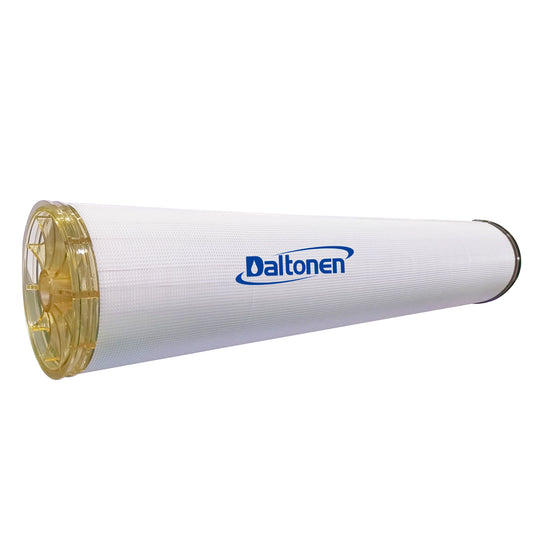Why is Nanofiltration Membrane Used in Coal Mine Wastewater Treatment?
19 May 2025
1. Characteristics of Coal Mine Wastewater
1.1 Complex Chemical Composition
The chemical composition of coal mine wastewater is highly complex, encompassing a wide range of organic and inorganic substances. The organic components are particularly diverse, with a significant presence of high molecular weight organic compounds such as humic acid and fulvic acid. These organic substances are characterized by their large molecular size and stable chemical properties, making them difficult to degrade through conventional treatment methods. Research indicates that the concentration of organic matter in coal mine wastewater can reach 1000-3000mg/L, with humic and fulvic acids accounting for over 60% of the total organic content. The presence of these organic compounds not only affects the biodegradability of the wastewater but also poses challenges in addressing color and odor issues post-treatment.
In terms of inorganic components, coal mine wastewater contains substantial amounts of suspended solids, heavy metal ions, and salts. Suspended solids, primarily originating from rock particles and coal sludge during the mining process, typically range in concentration from 1000 to 5000mg/L. These solids not only increase the turbidity of the wastewater but also impact the effectiveness of subsequent treatment processes. Heavy metal ions such as iron, manganese, zinc, and copper are also present in relatively high concentrations in coal mine wastewater, with iron concentrations reaching 100-500mg/L and manganese concentrations between 10 and 50mg/L. These heavy metals pose potential risks to the environment and human health, necessitating strict control over their discharge levels.
Furthermore, coal mine wastewater contains high concentrations of salts, such as chlorides and sulfates, with total dissolved solids (TDS) levels typically ranging from 1000 to 5000mg/L. The presence of these salts increases the conductivity and corrosiveness of the wastewater, causing damage to treatment equipment and pipelines and affecting the treatment efficacy and reuse value of the wastewater. Therefore, the complex chemical composition of coal mine wastewater determines its high treatment difficulty, necessitating the adoption of efficient treatment technologies to remove pollutants and meet environmental requirements while facilitating the recycling of resources.

2. Characteristics of Nanofiltration Membranes
2.1 Pore Size and Retained Molecular Weight
Nanofiltration membranes are semi-permeable membranes with selective separation capabilities, featuring pore sizes typically around 1 nanometer, positioned between reverse osmosis and ultrafiltration membranes. This pore size enables them to effectively retain organic substances and multivalent ions with relative molecular weights between 200 and 1000, while allowing small molecular substances and some monovalent ions to pass through. For instance, in the treatment of coal mine wastewater, nanofiltration membranes can retain high molecular weight organic compounds like humic and fulvic acids present in the wastewater, achieving a retention rate of over 90% and effectively eliminating color and odor. Additionally, nanofiltration membranes exhibit good retention of divalent and higher-valent heavy metal ions such as iron and manganese in the wastewater, with retention rates reaching 80%-95%, thereby reducing the environmental hazards posed by the wastewater. Meanwhile, small molecular organic substances and some monovalent ions in the wastewater can permeate through the nanofiltration membrane, achieving selective separation and enhancing the efficiency and effectiveness of wastewater treatment.
3. Role of Nanofiltration Membranes in Coal Mine Wastewater Treatment
3.1 Removal of Organic Matter
Nanofiltration membranes demonstrate significant efficacy in removing organic matter from coal mine wastewater. The wastewater contains substantial amounts of high molecular weight organic compounds like humic and fulvic acids, which are chemically stable and difficult to degrade using traditional treatment methods. With pore sizes around 1 nanometer, nanofiltration membranes can effectively retain organic substances with relative molecular weights between 200 and 1000. Research shows that nanofiltration membranes can achieve a retention rate of over 90% for humic and fulvic acids in coal mine wastewater, thereby effectively eliminating color and odor. This high removal capability makes nanofiltration membranes an ideal choice for addressing organic pollution in coal mine wastewater, significantly improving water quality, enhancing biodegradability, and increasing reuse value.
3.2 Removal of Inorganic Ions
Nanofiltration membranes also exhibit good removal effects on inorganic ions in coal mine wastewater. The wastewater contains large amounts of heavy metal ions and salts, such as iron, manganese, chlorides, and sulfates. Nanofiltration membranes can effectively retain divalent and higher-valent heavy metal ions in the wastewater, with retention rates reaching 80%-95%. For example, in coal mine wastewater with iron concentrations of 100-500mg/L and manganese concentrations of 10-50mg/L, nanofiltration membranes can significantly reduce the levels of these heavy metal ions, minimizing their potential risks to the environment and human health. Moreover, nanofiltration membranes can partially remove salts from the wastewater, reducing its conductivity and corrosiveness and protecting treatment equipment and pipelines. This selective retention capability of inorganic ions gives nanofiltration membranes a unique advantage in removing pollutants from coal mine wastewater, effectively enhancing treatment outcomes and safety.
4. Comparison of Nanofiltration Membranes with Other Membrane Technologies
4.1 Comparison with Ultrafiltration Membranes
Nanofiltration and ultrafiltration membranes are both commonly used membrane separation technologies, but they have distinct characteristics when treating coal mine wastewater.
-
Pore Size and Retention Capability: Ultrafiltration membranes typically have pore sizes ranging from 10 to 100 nanometers and are mainly used to remove suspended solids, large particulate colloids, and microorganisms from wastewater. They have some retention effect on high molecular weight organic substances with relative molecular weights less than 1000 but are relatively weak in removing small molecular organic substances and inorganic ions. In contrast, nanofiltration membranes have smaller pores, around 1 nanometer, enabling them to effectively retain organic substances and multivalent ions with relative molecular weights between 200 and 1000. They achieve retention rates of 80%-95% for high molecular weight organic compounds like humic and fulvic acids and heavy metal ions such as iron and manganese in coal mine wastewater, significantly outperforming ultrafiltration membranes.
-
Treatment Effectiveness: In practical applications, coal mine wastewater treated with ultrafiltration membranes may see substantial reductions in turbidity and suspended solids content. However, the removal rates of organic substances and heavy metal ions are relatively low, making it difficult to meet stringent environmental discharge standards. On the other hand, wastewater treated with nanofiltration membranes not only has low turbidity and suspended solids content but also significantly reduced concentrations of organic substances and heavy metal ions, better meeting the requirements for wastewater reuse and discharge.
-
Operating Costs: Ultrafiltration membranes operate at relatively low pressures, generally between 0.1 and 0.5 MPa, resulting in lower energy consumption. Nanofiltration membranes require slightly higher operating pressures, typically in the range of 0.5 to 1.5 MPa, leading to higher energy consumption. However, the higher retention efficiency and better treatment outcomes of nanofiltration membranes to some extent offset the increased energy consumption.
4.2 Comparison with Reverse Osmosis Membranes
There are also significant differences between nanofiltration and reverse osmosis membranes when treating coal mine wastewater.
-
Pore Size and Retention Capability: Reverse osmosis membranes have the smallest pore sizes, typically ranging from 0.1 to 1 nanometer, and can effectively remove dissolved salts, small molecular organic substances, and virtually all microorganisms from wastewater. However, their retention effect on organic substances and multivalent ions with relative molecular weights between 200 and 1000 is comparable to that of nanofiltration membranes. When treating coal mine wastewater, reverse osmosis membranes have a higher retention rate for monovalent ions, which may lead to excessive salt accumulation on the concentrate side and increase the risk of membrane fouling. Nanofiltration membranes, on the other hand, have a lower retention rate for monovalent ions, better avoiding the problem of excessive salt accumulation on the concentrate side while maintaining comparable retention effects on organic substances and heavy metal ions to reverse osmosis membranes.
-
Treatment Effectiveness: Coal mine wastewater treated with reverse osmosis membranes has very pure water quality, with almost no dissolved salts and small molecular organic substances remaining. However, the high salt concentration on the concentrate side of reverse osmosis membranes can easily lead to membrane fouling and scaling, affecting membrane lifespan and treatment efficiency. Nanofiltration membranes, while having relatively lower salt removal rates, can effectively remove organic substances and heavy metal ions, avoiding excessive salt accumulation on the concentrate side and reducing the risks of membrane fouling and scaling, making them more suitable for long-term stable operation.
-
Operating Costs: Reverse osmosis membranes operate at relatively high pressures, generally between 1.5 and 5 MPa, resulting in higher energy consumption. Additionally, reverse osmosis membranes have stricter pretreatment requirements, necessitating the removal of suspended solids, large particulate colloids, and some organic substances from the wastewater to prevent membrane fouling and blockage. This increases the cost and complexity of pretreatment. Nanofiltration membranes have relatively lower operating pressures and energy consumption and can directly treat coal mine wastewater containing certain amounts of suspended solids and organic substances, reducing pretreatment costs.
-

5. Case Study Analysis
5.1 Typical Coal Mine Wastewater Treatment Case
Take a large coal mine's wastewater treatment project as an example. The wastewater from this coal mine has typical complex component characteristics, with organic matter content as high as 2500mg/L, humic and fulvic acids accounting for over 65%; suspended solids content at 3500mg/L; iron ion concentration at 300mg/L, manganese ion concentration at 35mg/L; and total dissolved solids (TDS) content at 3500mg/L.
In this case, nanofiltration membrane technology was employed. After treatment with nanofiltration membranes, the removal rate of humic and fulvic acids in the wastewater reached 92%, with the color reducing from an original 120 degrees to below 10 degrees and a significant decrease in odor. The removal effect on heavy metal ions was also very remarkable, with iron ion concentration reduced to below 30mg/L and manganese ion concentration to below 5mg/L, both meeting national discharge standards. Meanwhile, nanofiltration membranes partially removed salts from the wastewater, reducing TDS content to around 2000mg/L and lowering the wastewater's conductivity and corrosiveness.
During the treatment process, the operating pressure of the nanofiltration membrane was 1.2MPa, with relatively moderate energy consumption. Since nanofiltration membranes have a lower retention rate for monovalent ions, they avoided the problem of excessive salt accumulation on the concentrate side, reducing the risk of membrane fouling and scaling, and the membrane's service life reached over 3 years. The entire treatment system operated stably, with stable and compliant effluent quality. It not only met environmental discharge requirements but also enabled partial reuse of the wastewater for mine area greening and road spraying, conserving a significant amount of water resources.
This case fully demonstrates the efficiency and cost-effectiveness of nanofiltration membranes in treating coal mine wastewater, proving their unique advantages in removing organic substances, heavy metal ions, and partial salts. It provides successful practical experience and reference for the treatment of coal mine wastewater.
6. Advantages of Nanofiltration Membranes in Coal Mine Wastewater Treatment
6.1 Efficient Removal of Specific Pollutants
Nanofiltration membranes exhibit highly efficient removal capabilities for specific pollutants when treating coal mine wastewater. The wastewater contains a large amount of complex organic substances, such as humic and fulvic acids, which have large molecular sizes and stable chemical properties, making them difficult to degrade using traditional treatment methods. With a pore size of approximately 1 nanometer, nanofiltration membranes can effectively retain organic substances with relative molecular weights between 200 and 1000, achieving a retention rate of over 90% for humic and fulvic acids. For instance, in a large coal mine wastewater treatment case, nanofiltration membranes increased the removal rate of humic and fulvic acids to 92%, significantly reducing the color and odor of the wastewater.
Moreover, nanofiltration membranes also have good retention effects on heavy metal ions in coal mine wastewater. Common heavy metal ions such as iron and manganese are present in high concentrations in the wastewater and pose potential risks to the environment and human health. Nanofiltration membranes can achieve retention rates of 80%-95% for these divalent and higher-valent heavy metal ions. In practical applications, nanofiltration membranes reduced iron ion concentrations from 300mg/L to below 30mg/L and manganese ion concentrations from 35mg/L to below 5mg/L, both meeting national discharge standards.
Nanofiltration membranes can also partially remove salts from the wastewater, reducing its conductivity and corrosiveness. The total dissolved solids (TDS) content in coal mine wastewater is usually high, and after treatment with nanofiltration membranes, the TDS content can be reduced from 3500mg/L to around 2000mg/L. This selective retention capability gives nanofiltration membranes a unique advantage in removing pollutants from coal mine wastewater, effectively enhancing the treatment outcomes and safety.
6.2 Energy and Environmental Conservation
Nanofiltration membranes not only possess efficient pollutant removal capabilities when treating coal mine wastewater but also offer significant energy and environmental conservation advantages. The operating pressure of nanofiltration membranes typically ranges from 0.5 to 1.5 MPa, which is considerably lower than the 1.5 to 5 MPa operating pressure of reverse osmosis membranes, resulting in lower energy consumption. Additionally, nanofiltration membranes have relatively lower pretreatment requirements and can directly treat coal mine wastewater containing certain amounts of suspended solids and organic substances, reducing the cost and complexity of pretreatment.
In practical applications, the operating pressure of nanofiltration membranes is 1.2MPa, with relatively moderate energy consumption. Since nanofiltration membranes have a lower retention rate for monovalent ions, they avoid the problem of excessive salt accumulation on the concentrate side, reducing the risks of membrane fouling and scaling, and the membrane's service life can reach over 3 years. This not only reduces the frequency of membrane replacement but also decreases the costs associated with cleaning and maintenance due to membrane fouling.
The effluent quality from nanofiltration membrane treatment is stable and compliant, meeting environmental discharge requirements and enabling partial reuse of the wastewater, such as for mine area greening and road spraying, conserving a significant amount of water resources. This efficient recycling and reuse of resources further highlights the energy and environmental conservation advantages of nanofiltration membranes in coal mine wastewater treatment.
7. Challenges and Solutions
7.1 Membrane Fouling Issues
When treating coal mine wastewater, nanofiltration membranes face serious membrane fouling problems. The complex composition of coal mine wastewater, containing large amounts of suspended solids, organic substances, and inorganic salts, makes these substances prone to deposit on the membrane surface, forming a fouling layer that leads to a decrease in membrane flux, an increase in operating pressure, and affects treatment effectiveness and membrane lifespan. For instance, in practical applications, untreated coal mine wastewater can cause the membrane flux of nanofiltration membranes to drop by 30%-50% within a short period, with operating pressure increasing by 0.2-0.5 MPa.
Membrane fouling can be categorized into organic fouling, inorganic fouling, and biological fouling. Organic fouling is primarily caused by high molecular weight organic substances such as humic and fulvic acids in the wastewater. These organic substances adsorb onto the membrane surface, forming a dense fouling layer that hinders the passage of water molecules. Inorganic fouling is caused by suspended solids and salts in the wastewater, with suspended solids depositing on the membrane surface and salts crystallizing on the concentrate side, blocking membrane pores. Biological fouling is mainly caused by microorganisms in the wastewater, which proliferate on the membrane surface, forming a biofilm that further exacerbates membrane fouling.
To address membrane fouling issues, the following solutions can be implemented:
-
Optimize Pretreatment Processes: Employing coagulation sedimentation, sand filtration, and other pretreatment methods to remove most suspended solids and large particulate organic substances from the wastewater can reduce the risk of membrane fouling. For example, after coagulation sedimentation pretreatment, the suspended solids content in the wastewater can be reduced by 60%-80%, significantly slowing down the rate of membrane flux decline.
-
Improve Membrane Materials and Structures: Develop new types of nanofiltration membrane materials with anti-fouling properties, such as modified polyamide membranes and inorganic membranes. These materials offer better hydrophilicity and anti-fouling capabilities. Additionally, optimizing membrane structures, such as using different forms of membrane components like hollow fiber membranes and flat sheet membranes, can enhance the membrane's anti-fouling performance.
-
Enhance Membrane Cleaning Techniques: Regularly perform physical and chemical cleaning on nanofiltration membranes. Physical cleaning includes backwashing and air scouring, which can remove suspended solids and some pollutants from the membrane surface. Chemical cleaning involves selecting appropriate cleaning agents based on the nature of the pollutants, such as acids, alkalis, and oxidants, to remove organic substances, inorganic salts, and biofilms from the membrane surface. For example, using an alternating acid and alkali cleaning method can effectively restore membrane flux, with a flux recovery rate of 80%-90% after cleaning.
7.2 Cost Issues
The costs associated with using nanofiltration membranes to treat coal mine wastewater mainly include equipment investment, operating energy consumption, membrane replacement, and maintenance costs. The equipment investment is relatively high, as a complete nanofiltration membrane treatment system requires a significant amount of funding for purchasing membrane modules, pumps, pipes, and other equipment. Operating energy consumption is also a concern, as nanofiltration membranes typically operate at pressures between 0.5 and 1.5 MPa, resulting in relatively high energy consumption. Moreover, the limited lifespan of membranes necessitates regular replacement and maintenance, adding to the operating costs.
To reduce the costs of treating coal mine wastewater with nanofiltration membranes, the following measures can be taken:
-
Improve Equipment Operating Efficiency: Optimize system design and reasonably configure equipment to enhance operating efficiency and reduce energy consumption. For example, using variable frequency speed control technology to automatically adjust the pump speed based on wastewater flow and quality changes can reduce energy consumption by 10%-20%.
-
Extend Membrane Lifespan: By optimizing pretreatment processes, improving membrane materials, and enhancing membrane cleaning techniques, membrane fouling can be reduced, and membrane lifespan can be extended. For instance, using optimized pretreatment and cleaning technologies can extend the service life of nanofiltration membranes to 3-5 years.
-
Reduce Membrane Replacement and Maintenance Costs: Select cost-effective membrane materials and components to lower membrane replacement costs. At the same time, strengthen daily equipment maintenance and management to minimize equipment failures and reduce maintenance costs.
Tags:
